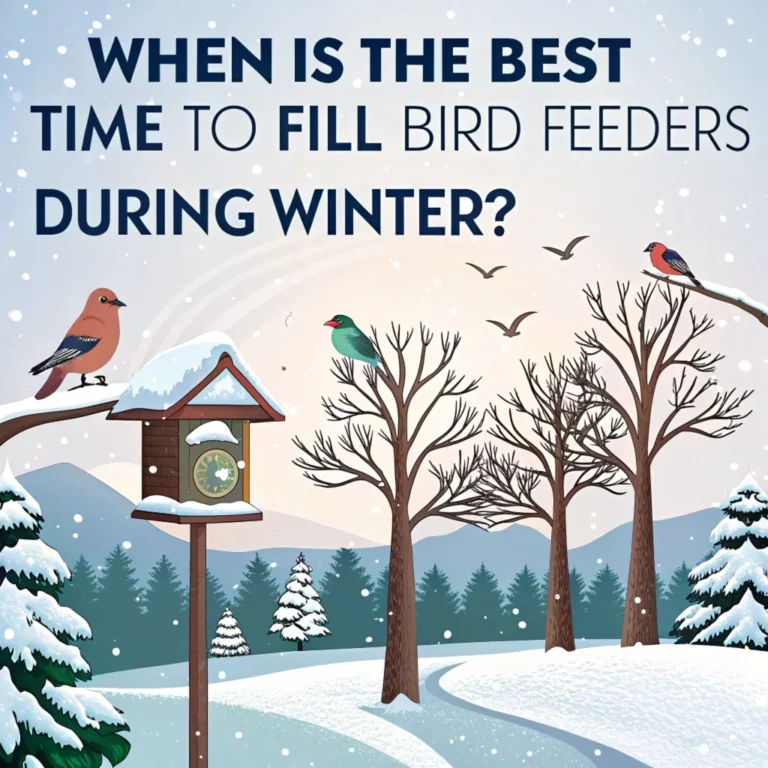How Do I Stop Raccoons From Climbing My Bird Feeder Pole?
Raccoons raiding bird feeders frustrate many bird enthusiasts. These clever animals often outsmart simple deterrents, leaving bird lovers searching for effective solutions.
This guide offers practical strategies to protect your bird feeders from raccoon invasions.
We explore various methods, from physical barriers to electronic devices, that help keep raccoons away.
Let’s dive into the world of raccoon-proofing bird feeders and discover how to create a safe haven for birds in your backyard.

Key Takeaways:
- Install a baffle on your feeder pole to prevent climbing
- Use smooth metal wraps around poles to deter raccoons
- Offer spicy bird food that deters mammals but not birds
- Choose weight-sensitive feeders that close when heavy animals attempt to feed
- Position feeders away from trees and structures raccoons can use to jump
- Clean up spilled seed regularly to reduce attraction
- Consider bringing feeders indoors at night
- Employ electronic deterrents like motion-activated sprinklers
Install a Raccoon Baffle
A baffle is an effective tool to stop raccoons from climbing your bird feeder pole. Baffles designed for raccoons are larger than squirrel baffles, typically 10 inches in diameter and 2 feet tall. Place the baffle on the pole at a height that prevents raccoons from reaching around it.
Baffles create a physical barrier that raccoons struggle to overcome. When selecting a baffle, consider its material and durability.
Metal baffles often prove more effective and long-lasting than plastic alternatives. Proper installation is crucial; ensure the baffle is securely attached and positioned at the right height to maximize its effectiveness.
For optimal results, combine baffles with other deterrent methods. This multi-layered approach enhances your defense against persistent raccoons.
Wrap Poles with Smooth Metal
Raccoons struggle to climb smooth metal surfaces. Wrap your feeder pole with sheet metal or aluminum flashing to create a slippery barrier. Extend the metal wrap at least 4 feet high to ensure raccoons cannot reach the top.
Smooth metal wraps provide an additional layer of protection for your bird feeders. When installing the wrap, ensure it’s tightly secured to prevent gaps that raccoons might exploit.
Regular inspection and maintenance of the metal wrap are essential to maintain its effectiveness over time.
Consider using stainless steel or galvanized metal for increased durability and resistance to weathering.
Use Spicy Bird Food

Mammals, including raccoons, are sensitive to capsaicin, the compound that makes peppers hot. Birds lack this sensitivity.
Offer bird food treated with capsaicin to deter raccoons while allowing birds to feed normally. Use this strategy for at least a week to discourage raccoon visits.
Spicy bird food serves as a natural deterrent without harming birds or raccoons. When introducing spicy food, gradually mix it with regular seed to allow birds to adjust. Monitor bird behavior to ensure they continue to visit your feeders during the transition.
Remember that rain can wash away the spicy coating, so replenish treated food regularly, especially after wet weather.
Choose Weight-Sensitive Feeders
Some bird feeders feature spring-loaded perches that close when too much weight is applied. These feeders allow small birds to feed but deny access to heavier raccoons.
Select feeders designed to close at weights between 10 to 30 pounds to account for raccoon size variation.
Weight-sensitive feeders provide an ingenious solution to raccoon problems. When choosing these feeders, consider the types of birds you want to attract, as some larger birds might also trigger the closing mechanism. Regular maintenance ensures the springs remain responsive and effective.
Combine weight-sensitive feeders with other methods for comprehensive protection against raccoons and other larger animals.
Position Feeders Strategically
Place bird feeders away from trees, decks, and other structures raccoons might use as launching points. Install feeders in open areas on poles, making it difficult for raccoons to access them without climbing.
Strategic placement is crucial in deterring raccoons. When selecting a location for your feeders, consider the surrounding landscape.
Aim for spots that offer clear visibility, allowing you to monitor feeder activity and spot potential raccoon approaches.
Remember that raccoons are adaptable, so periodically reassess and adjust feeder positions to stay one step ahead of these clever creatures.
Maintain a Clean Feeding Area

Regularly clean up spilled seed around your feeders. Attach seed catch trays to feeders to minimize ground spillage. This practice reduces the attraction for raccoons and other ground-feeding animals.
A clean feeding area not only deters raccoons but also promotes bird health. Implement a regular cleaning schedule for both the area around feeders and the feeders themselves.
This helps prevent the spread of diseases among birds and reduces the likelihood of attracting unwanted wildlife.
Consider using no-mess seed blends to minimize spillage and make cleanup easier.
Bring Feeders Indoors at Night
Since raccoons are primarily nocturnal, bringing feeders indoors before dark can be an effective strategy. Store feeders in a secure garage or shed overnight to deny raccoons access.
Nightly feeder removal requires commitment but can significantly reduce raccoon visits. Establish a consistent routine for bringing feeders in and putting them out to maintain regular feeding times for birds. This practice also allows for easy inspection and cleaning of feeders.
If removing feeders nightly isn’t feasible, consider motion-activated lights near feeding areas to deter nighttime visitors.
Use Electronic Deterrents
Motion-activated sprinklers or lights can startle raccoons and discourage them from approaching your feeders. These devices provide continuous protection without harming the animals.
Electronic deterrents offer a hands-off approach to raccoon prevention. When setting up these devices, adjust sensitivity levels to avoid false triggers from smaller animals or wind.
Regularly check batteries and positioning to ensure consistent operation.
Combine electronic deterrents with other methods for a comprehensive raccoon-proofing strategy.
Select Raccoon-Proof Feeder Designs
Choose bird feeders with features that make them difficult for raccoons to access or manipulate. Caged feeders allow small birds to enter while keeping larger animals out.
Raccoon-proof designs come in various styles to suit different bird species and feeding preferences. Look for feeders with sturdy construction and secure closures to withstand raccoon attempts.
Some designs feature weight-activated closures or narrow openings that prevent raccoon access.
Consider offering multiple feeder types to cater to different bird species while maintaining raccoon resistance.
Employ Natural Deterrents
Some natural scents may deter raccoons. Consider using ammonia-soaked rags or spraying a vinegar solution near feeder areas. Refresh these deterrents regularly for continued effectiveness.
Natural deterrents provide an eco-friendly option for raccoon prevention. Experiment with different scents to find the most effective option for your area.
Remember that rain and wind can dissipate these scents quickly, so frequent reapplication is necessary.
Combine natural deterrents with physical barriers for enhanced protection against persistent raccoons.
Secure Garbage and Pet Food
Reduce overall raccoon attraction to your property by securing garbage cans with tight-fitting lids and storing pet food indoors. This limits food sources that might draw raccoons to your yard.
Proper waste management is crucial in raccoon deterrence. Use raccoon-proof garbage cans or add bungee cords to secure lids. For pet food, establish a feeding schedule and remove uneaten food promptly to avoid attracting wildlife.
Creating a less attractive environment overall can significantly reduce raccoon visits to your bird feeders.
Use a Combination of Methods
Employ multiple strategies simultaneously for the best results. Combining physical barriers, deterrents, and smart feeder choices creates a comprehensive approach to raccoon prevention.
A multi-faceted approach increases your chances of success in deterring raccoons. Regularly assess the effectiveness of each method and be prepared to adjust your strategy as needed.
Remember that raccoons are intelligent and adaptable, so varying your tactics can help stay ahead of their learning curve.
Engage with local bird-watching communities to share experiences and learn new raccoon-proofing techniques.
Monitor and Adjust Your Approach
Observe the effectiveness of your chosen methods and be prepared to adjust your strategy. Raccoons are intelligent and may find ways around single deterrents over time.
Continuous monitoring is key to long-term success in raccoon prevention. Keep a log of raccoon activity and the effectiveness of different methods.
This information can help you refine your approach over time. Be prepared to introduce new tactics or rotate existing ones to prevent raccoons from becoming accustomed to your deterrents.
Consider using trail cameras to gather data on nocturnal raccoon behavior around your feeders.
Consider Professional Help
If raccoon problems persist despite your efforts, consult a wildlife professional for additional guidance or humane removal options.
Professional assistance can provide tailored solutions for persistent raccoon issues. Wildlife experts can offer site-specific recommendations and implement more advanced deterrent strategies. They may also identify potential raccoon entry points or attractants you might have overlooked.
When selecting a professional, choose one who prioritizes humane and ethical wildlife management practices.
FAQs
Are raccoon deterrents safe for birds?
Most deterrents designed for raccoons are safe for birds. However, avoid using sticky substances on poles, as these can harm birds’ feathers.
How high should I place my bird feeder to deter raccoons?
Place feeders at least 5 feet high and 10 feet away from structures raccoons could use to jump from.
Can raccoons be legally removed from my property?
Regulations vary by location. Check local wildlife laws before attempting to remove or relocate raccoons.
Do ultrasonic devices effectively deter raccoons?
Ultrasonic devices have mixed results and may not be consistently effective against raccoons.
How often should I clean my bird feeders to discourage raccoons?
Clean feeders and the surrounding area at least weekly to reduce attraction for raccoons and maintain bird health.

Luna is the passionate founder and author of Birds and You, a website dedicated to sharing her love for birds with fellow enthusiasts. Through her engaging articles and guides, she aims to educate and inspire others to explore the fascinating world of birds. When she’s not writing, you can find Luna observing birds in their natural habitats or sharing beautiful bird photography on Pinterest. Join her on this journey to celebrate and protect our feathered friends!







